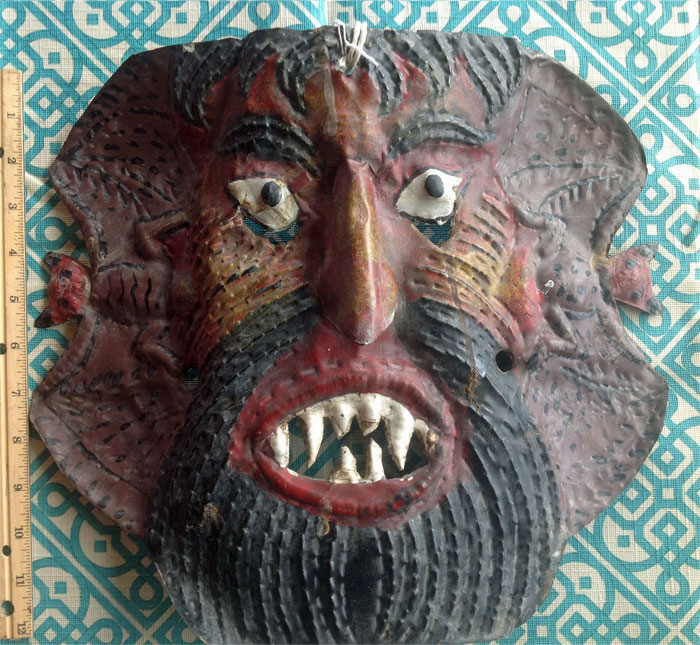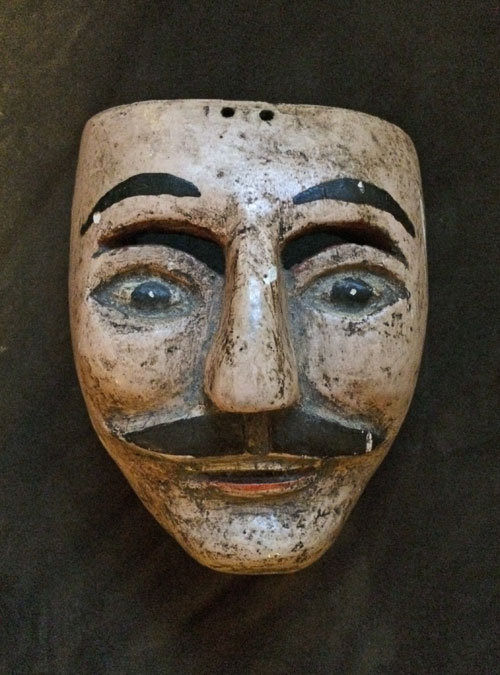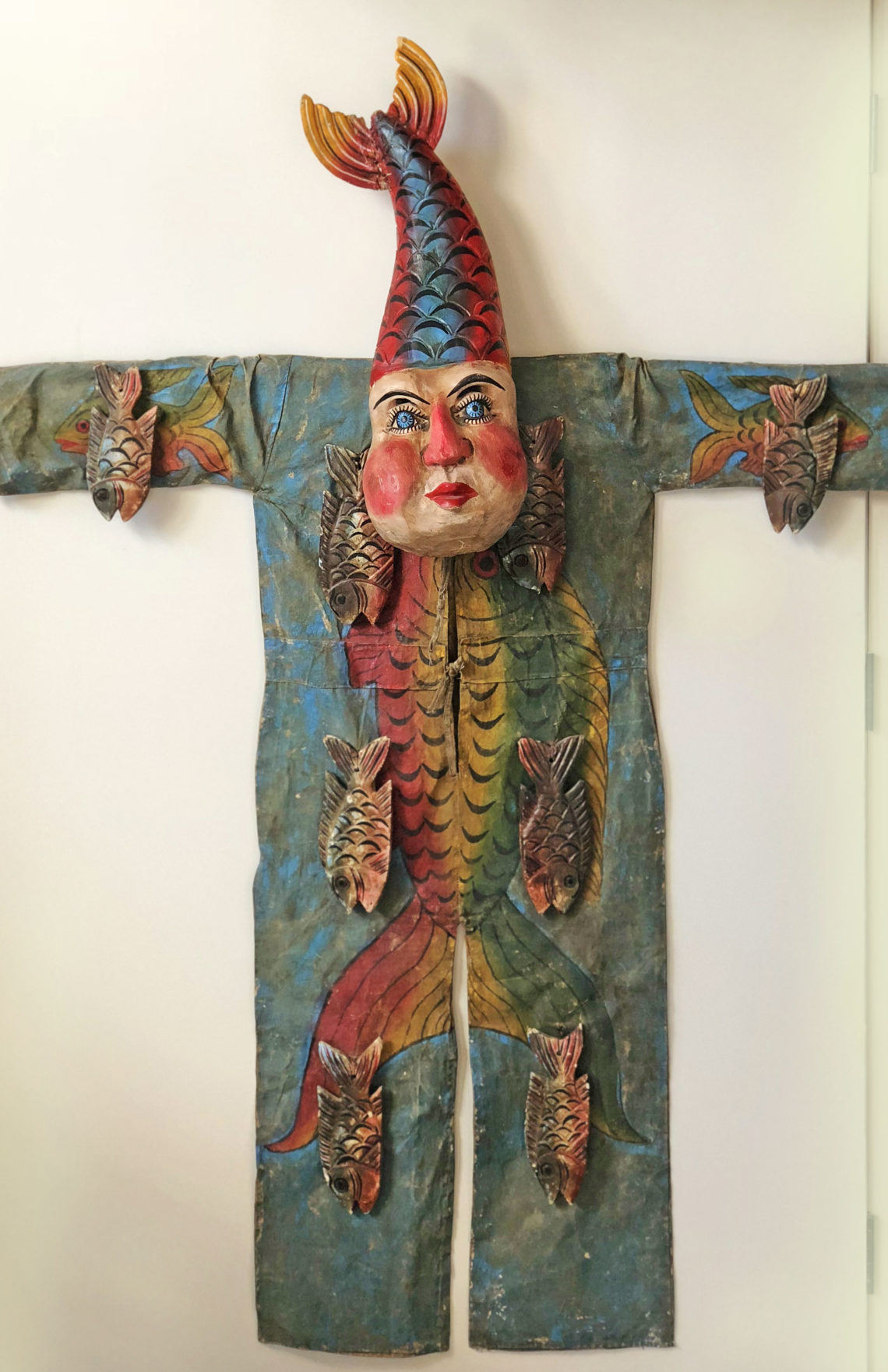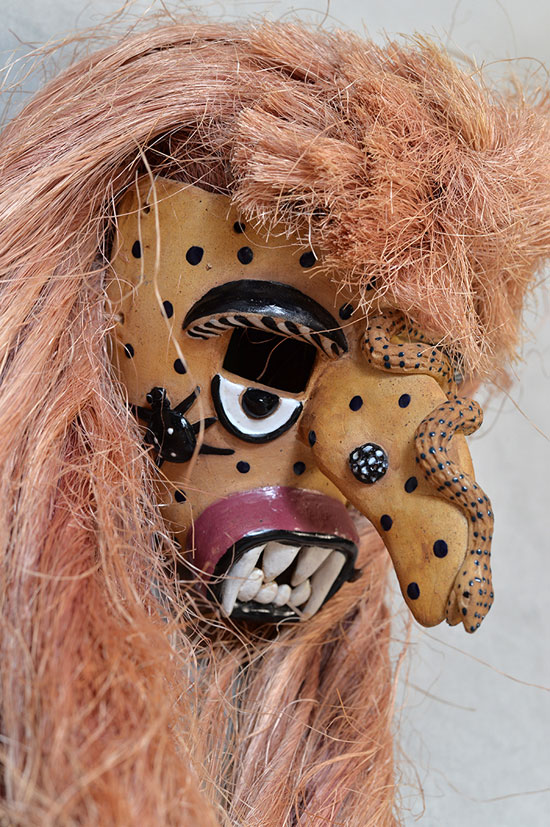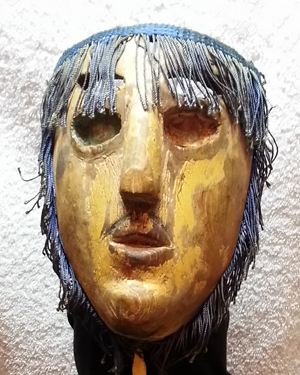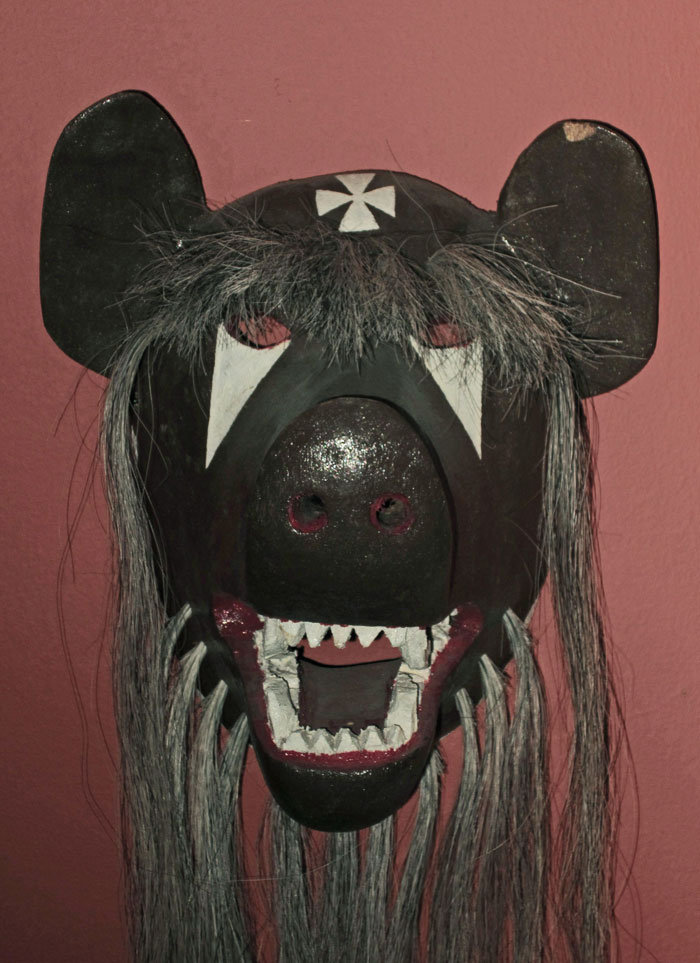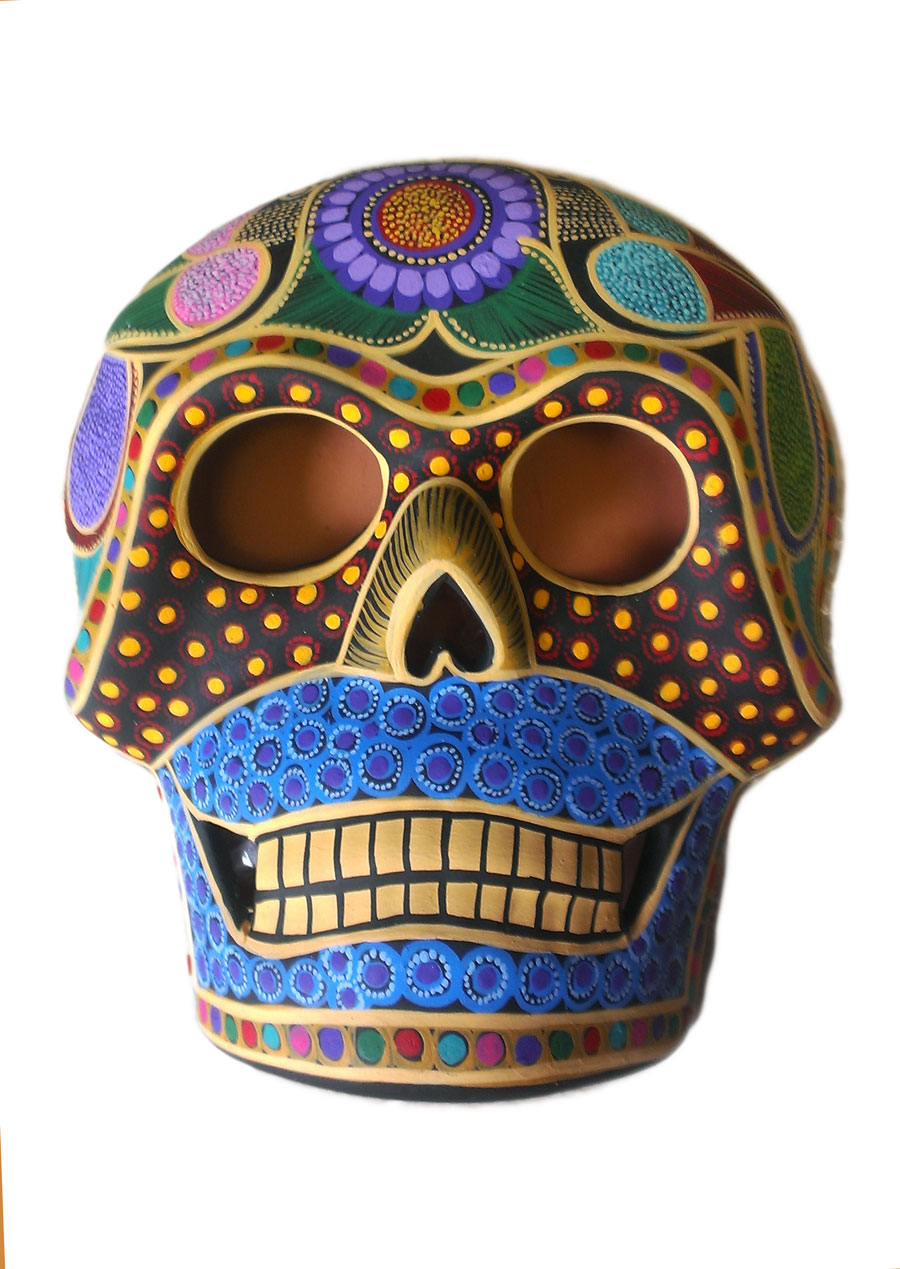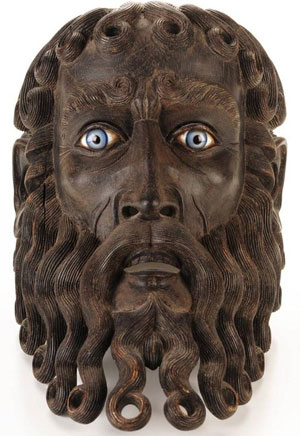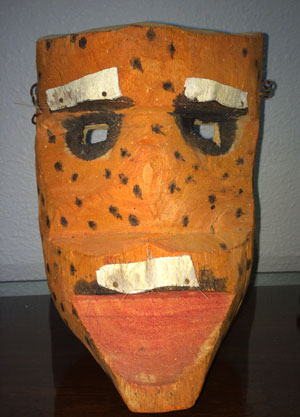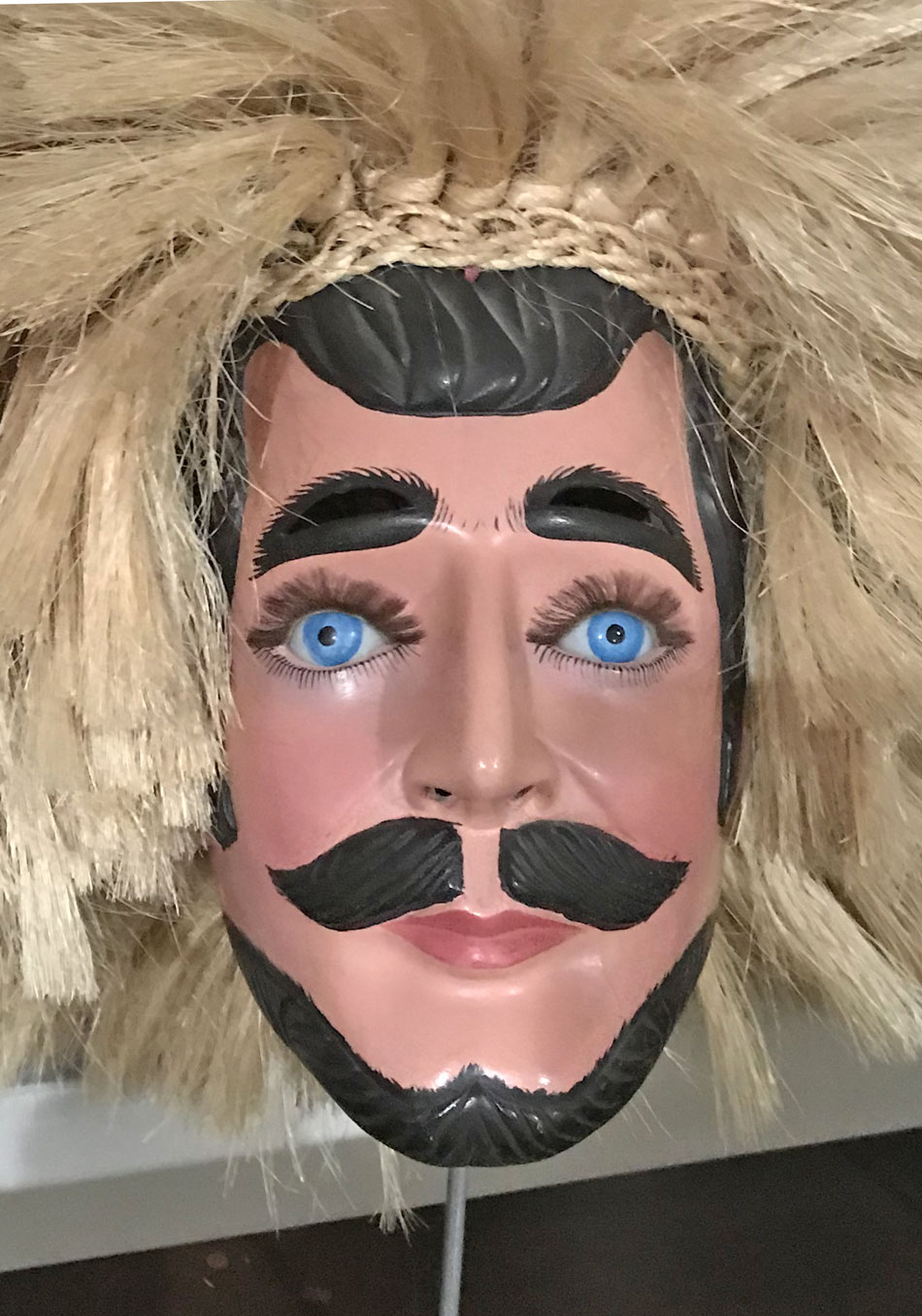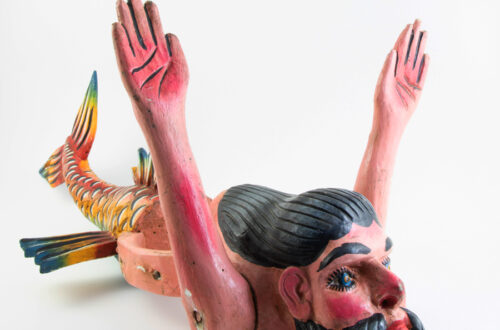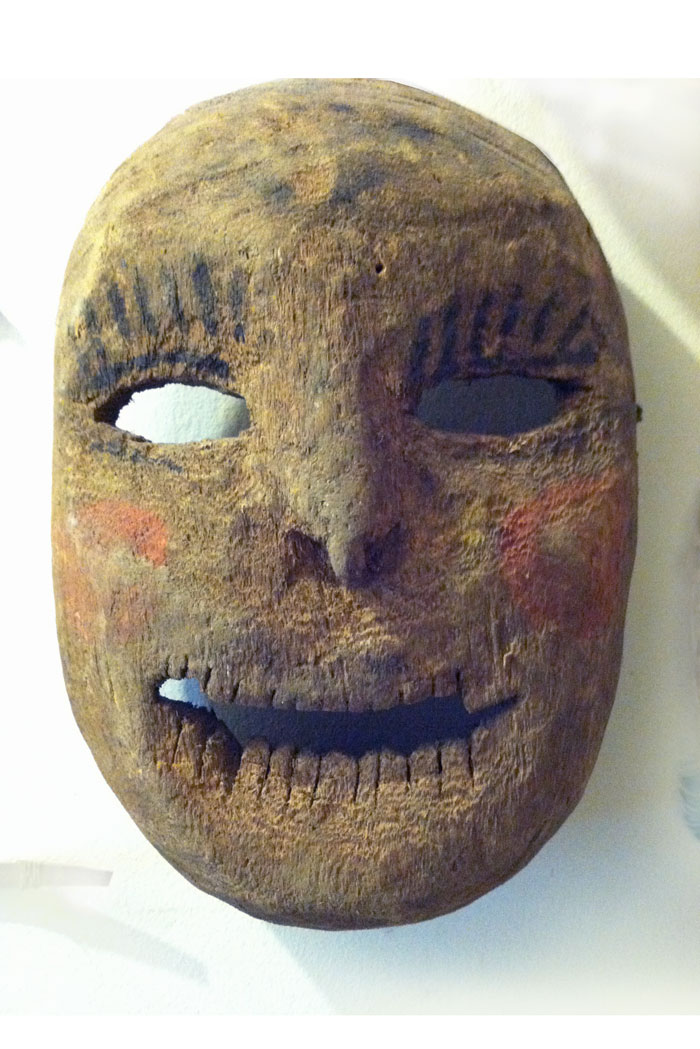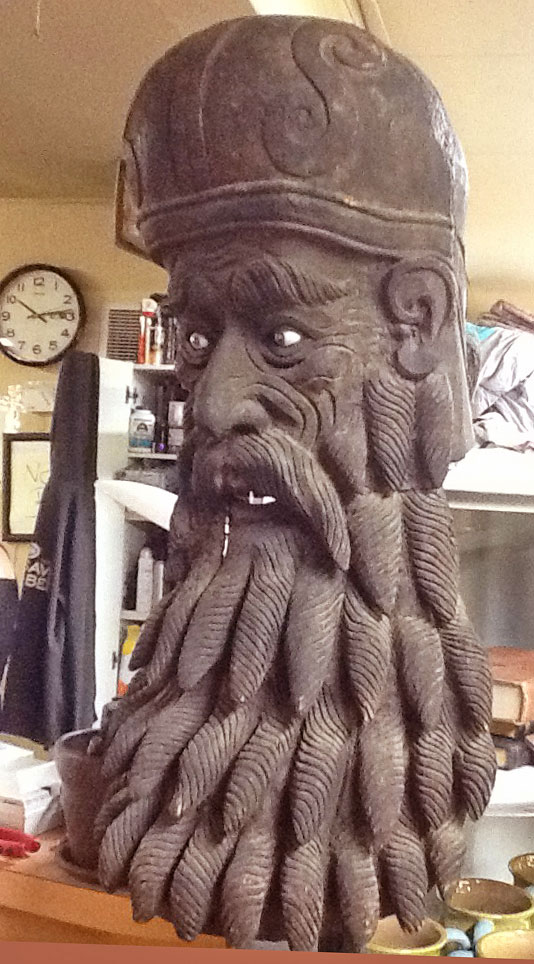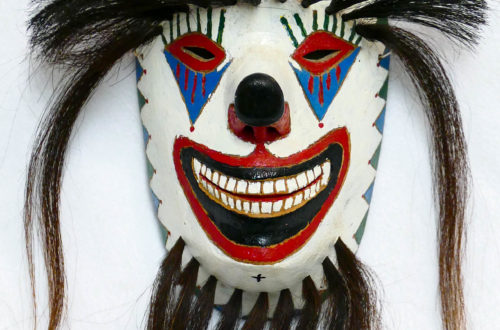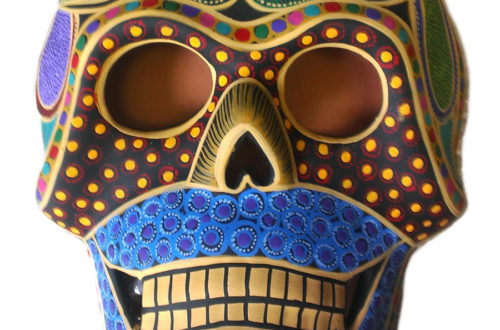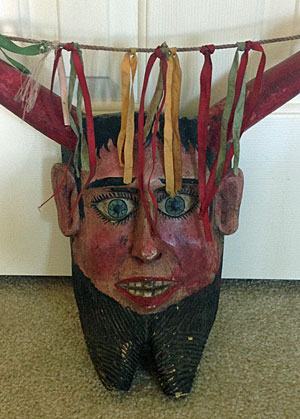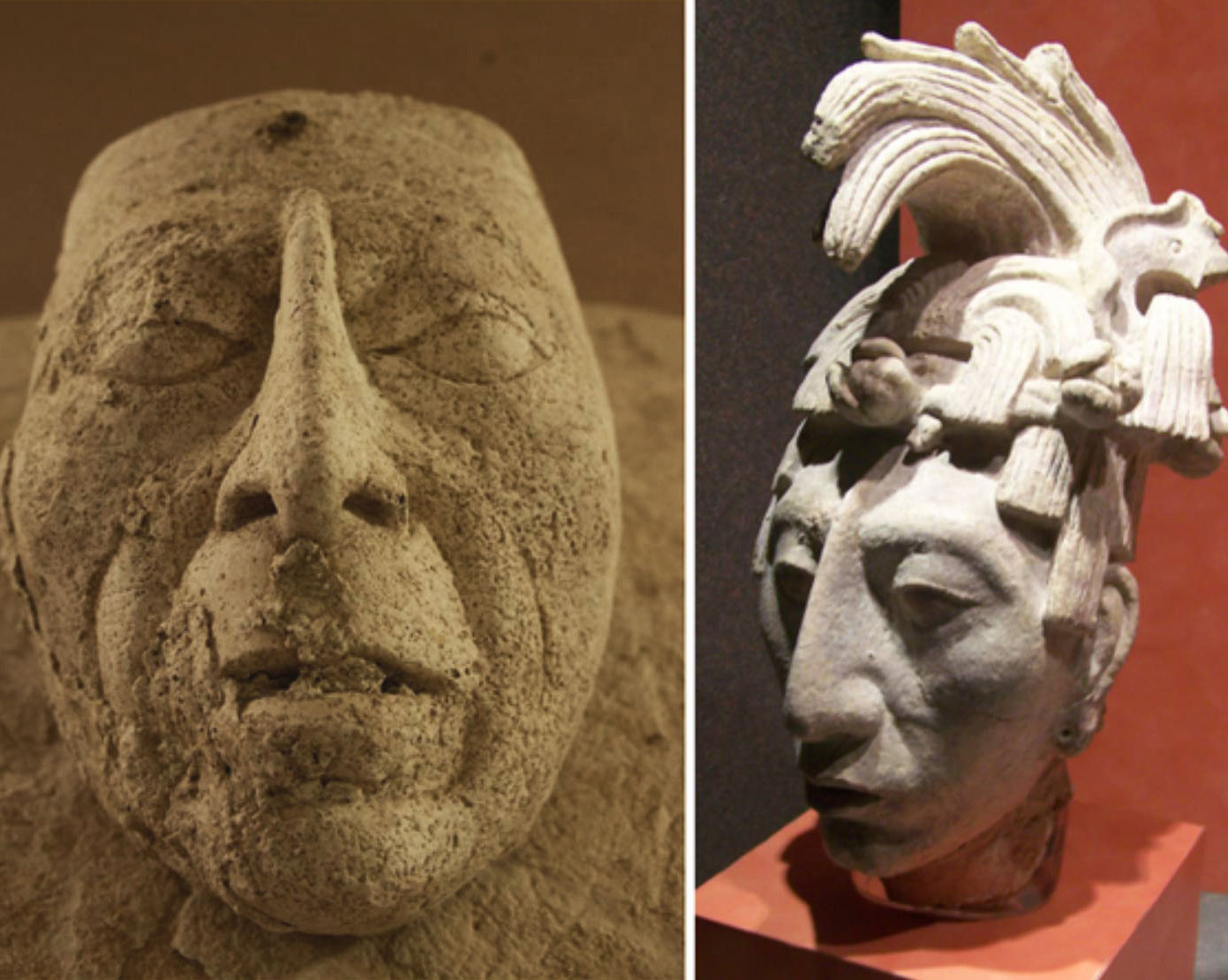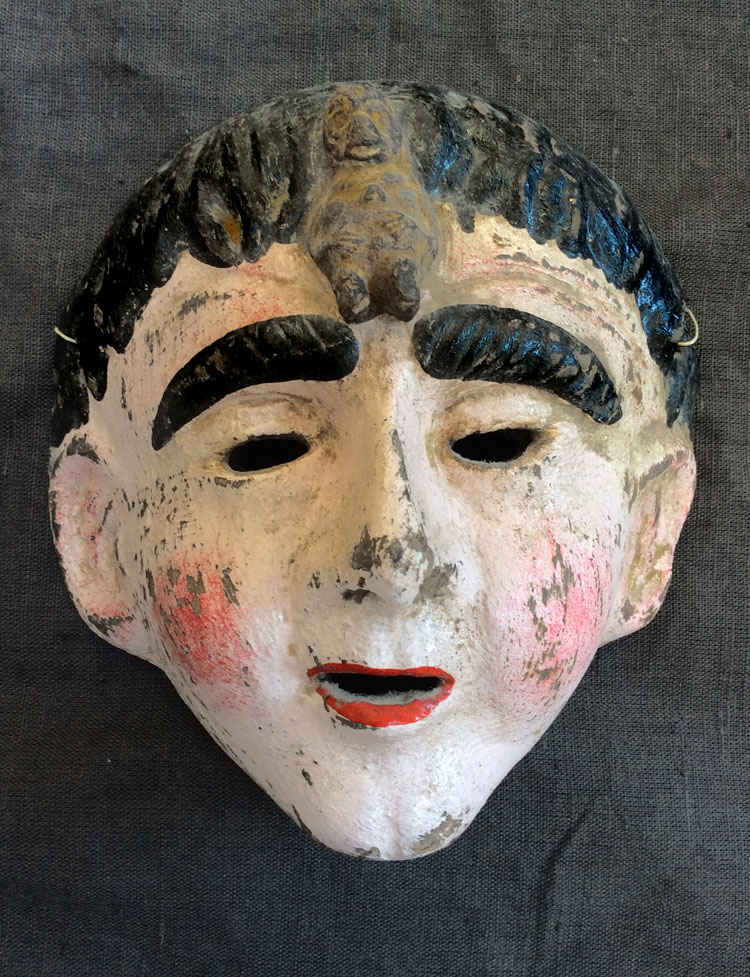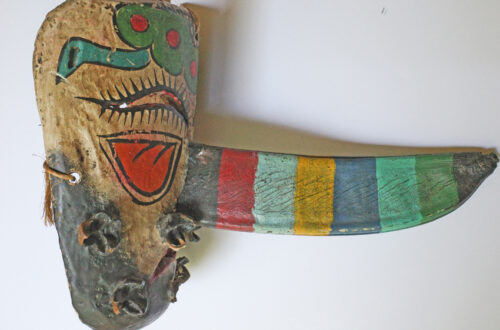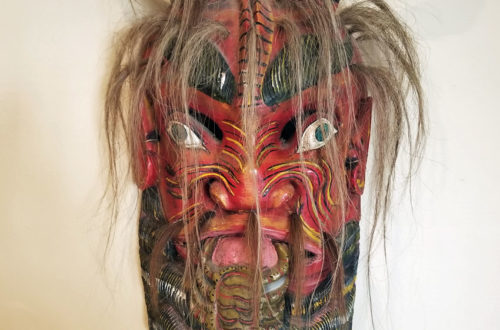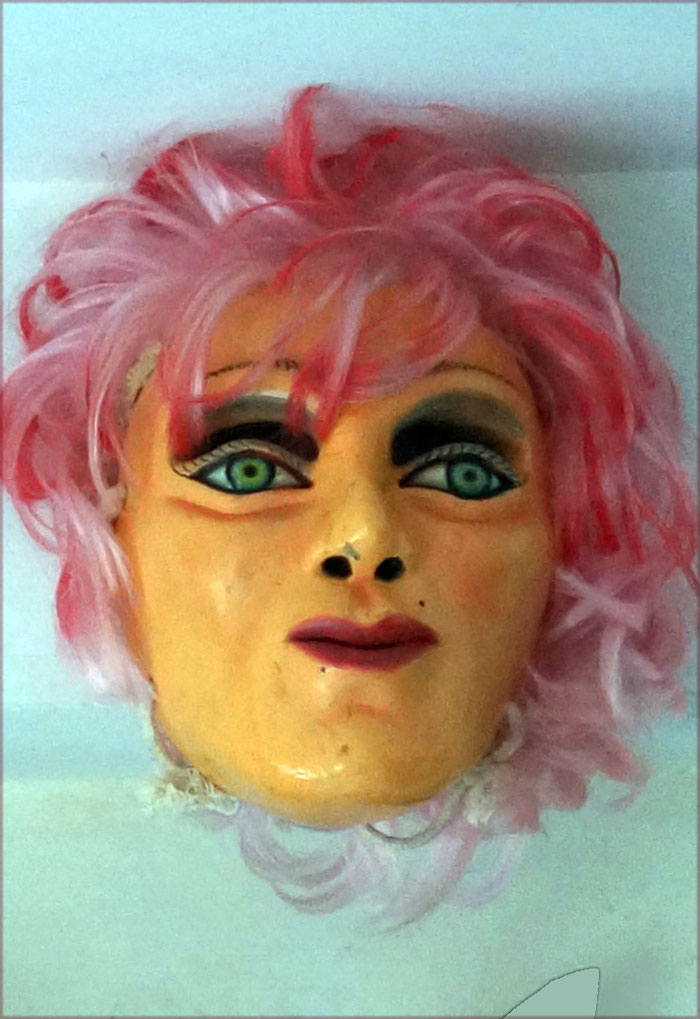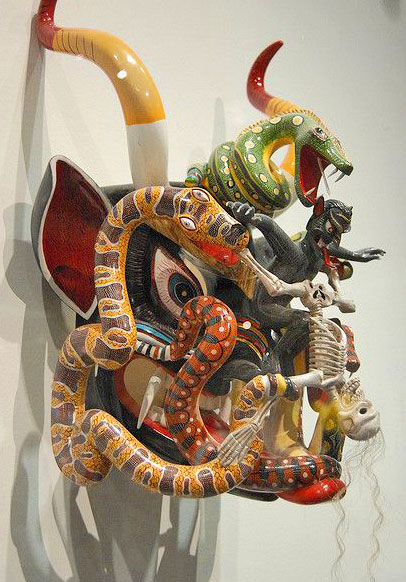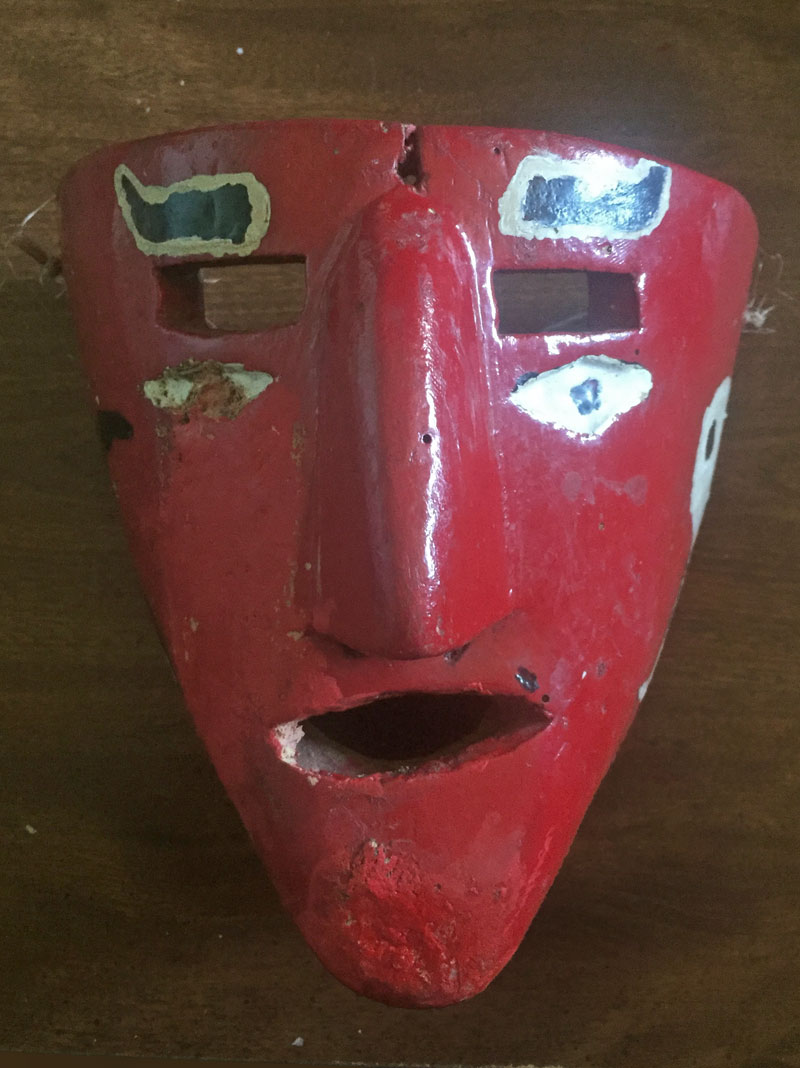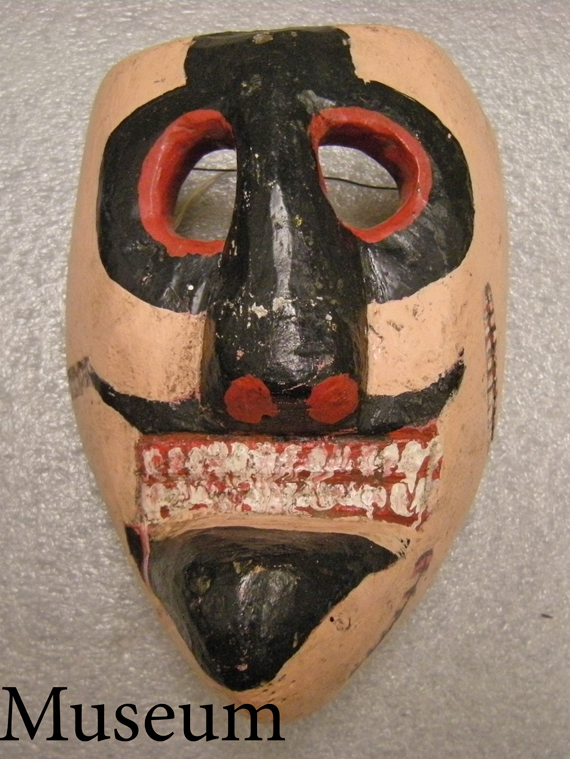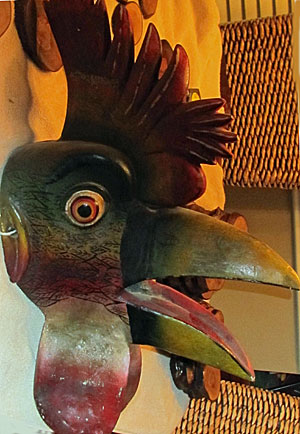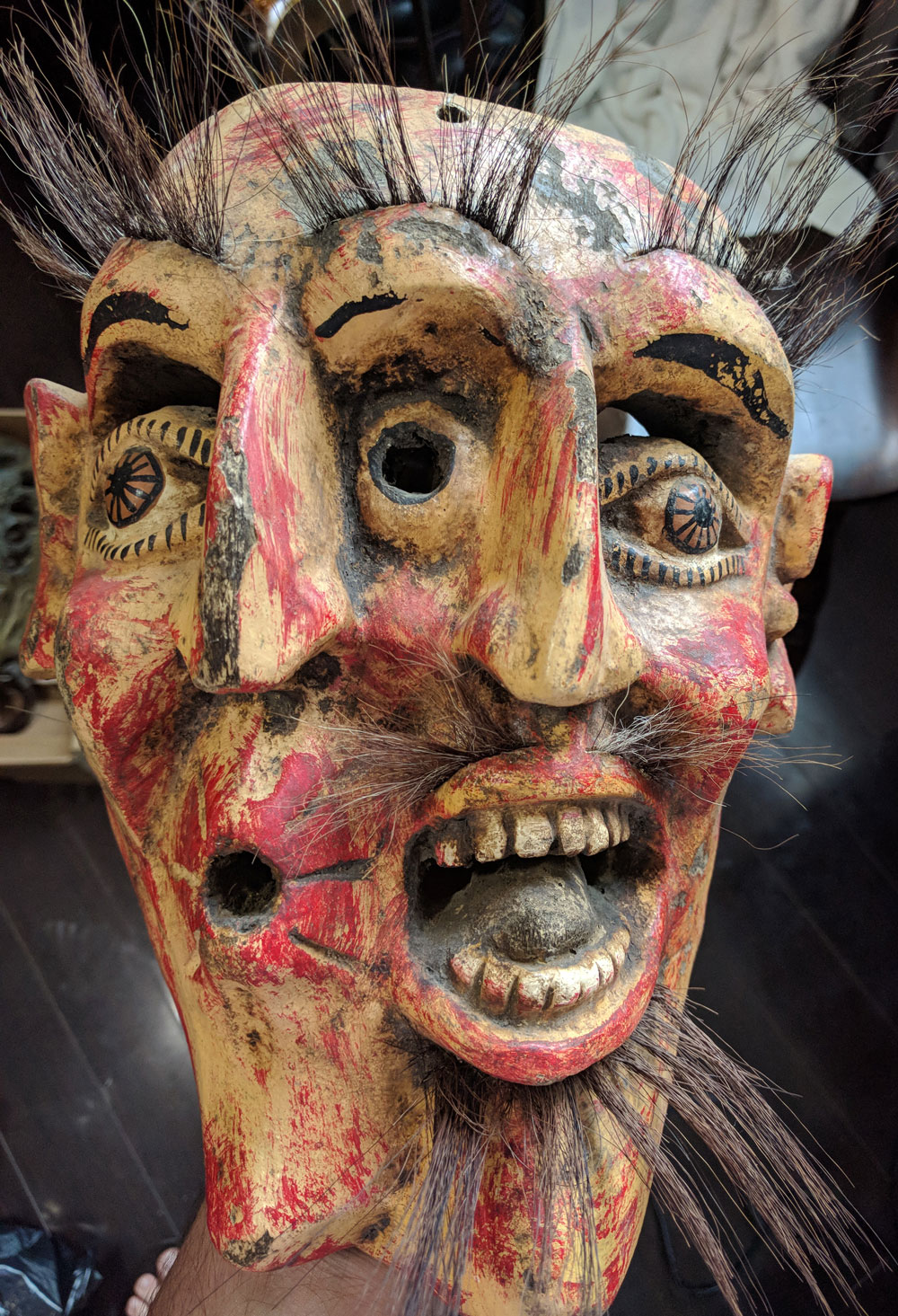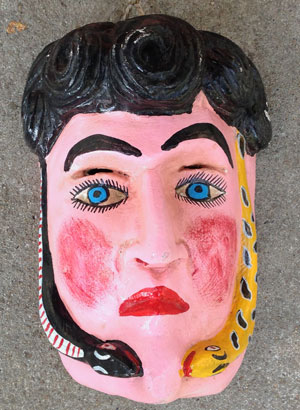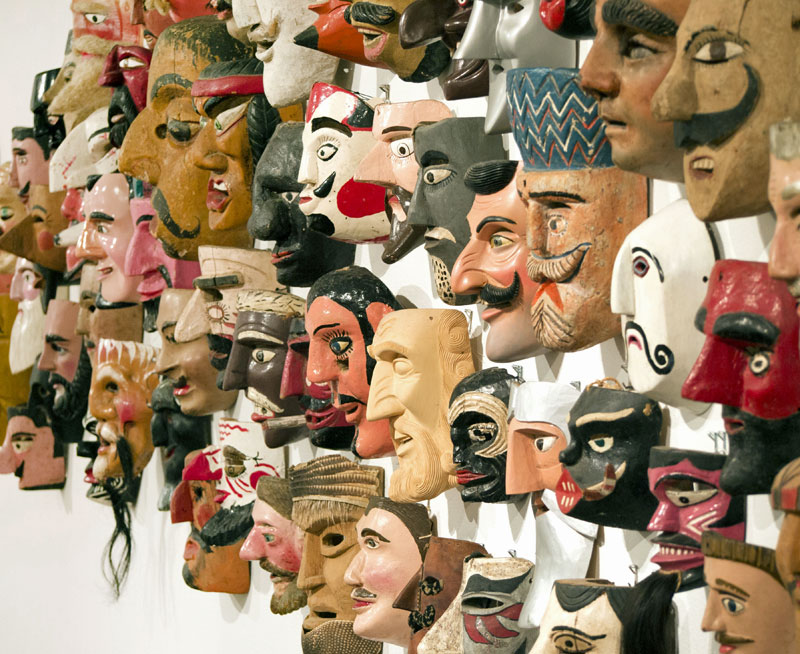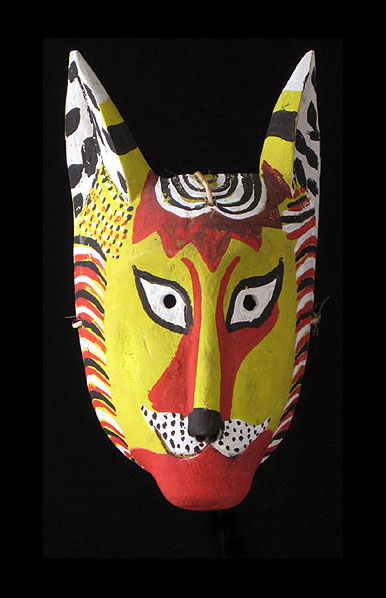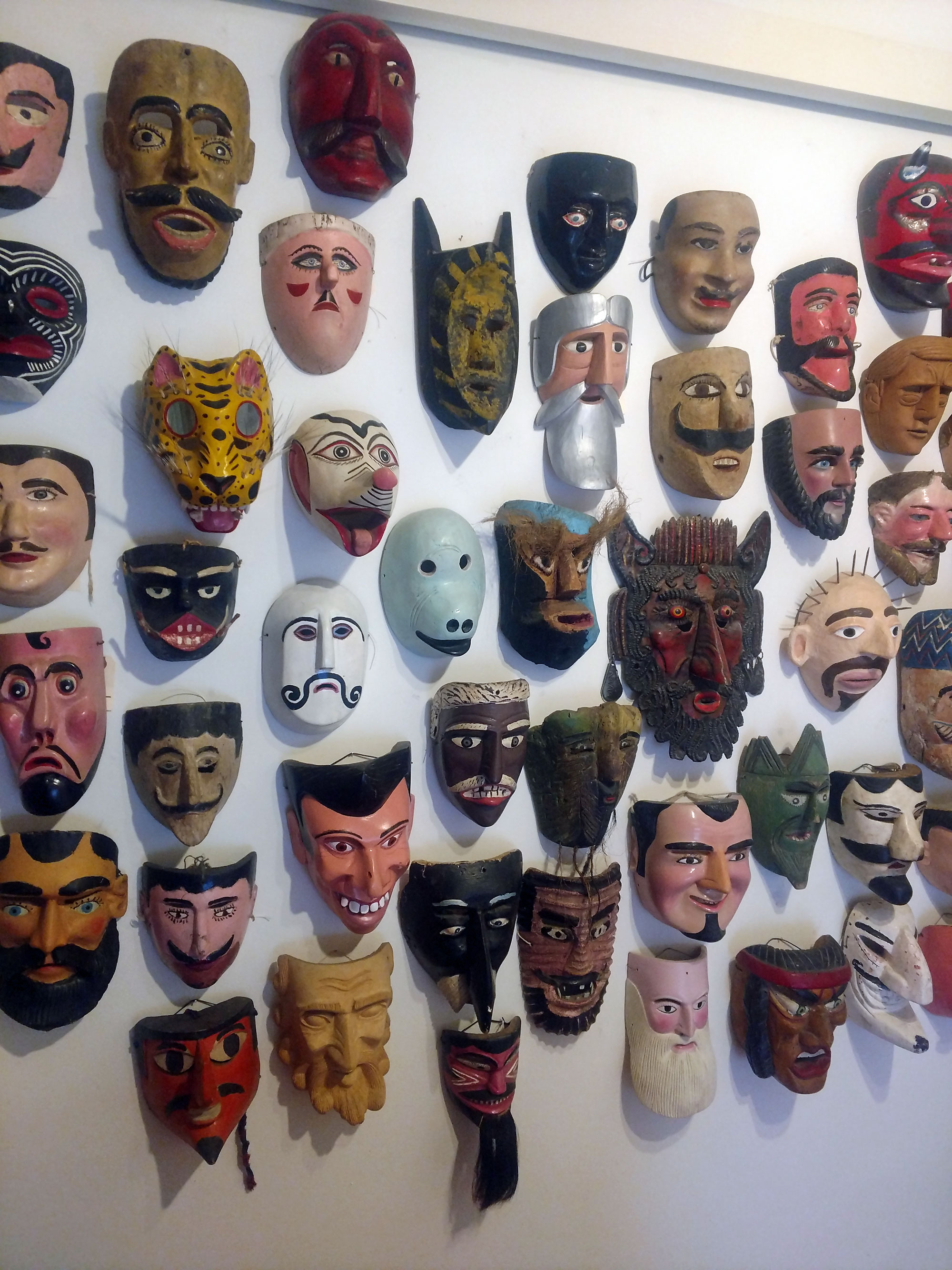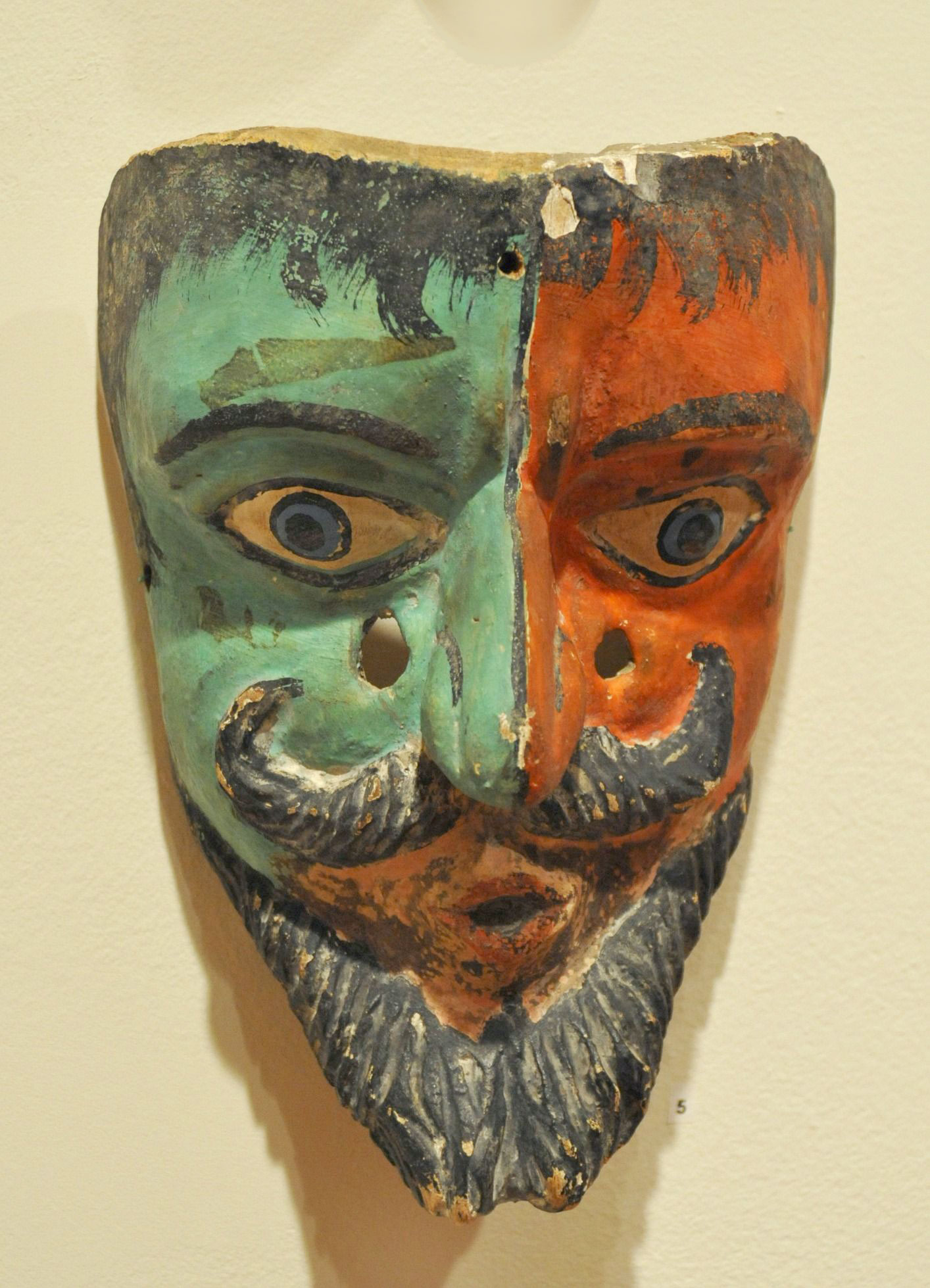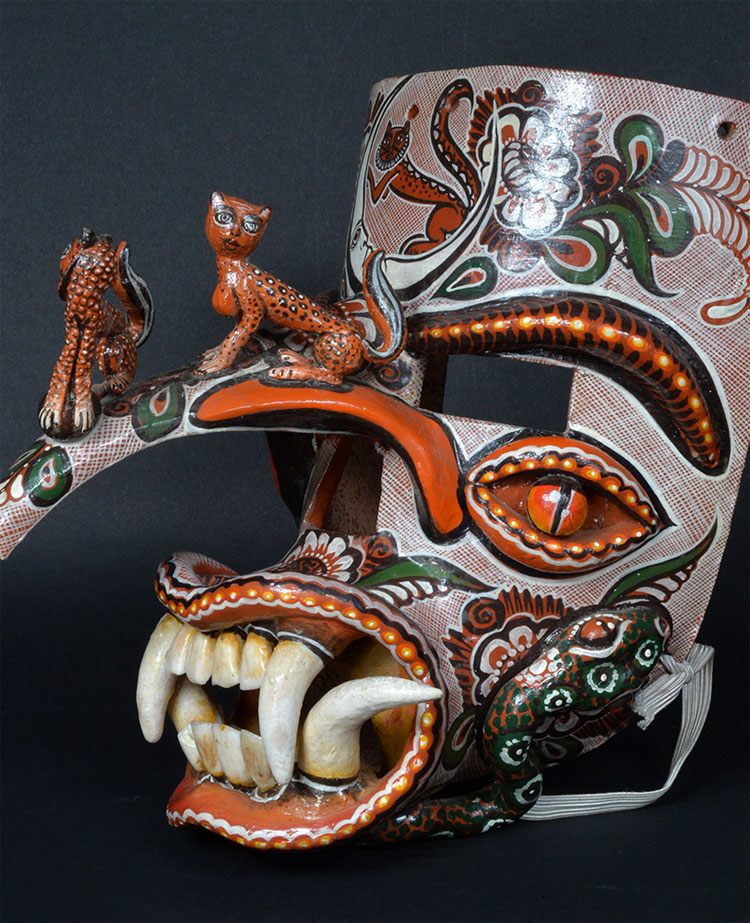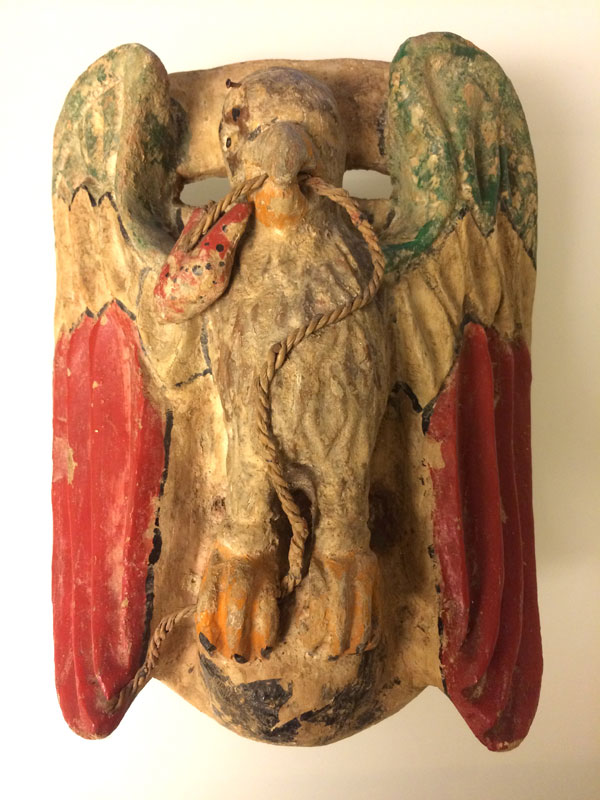The first mask is called a Parachico and is an authentic Mexican dance mask in the collection of Bryan Stevens who has www.mexicandancemasks.com. Here’s what he has written. “The Parachicos dance is most famously performed in the town of Chiapa de Corzo in the Mexican state of Chiapas. It is said to honor three Catholic saints—Saint Anthony, Our Lord of Esquipulas, and Saint Sabastian. The costumed dancers wear wooden masks with bearded Caucasian faces, they carry handmade tin maracas that are painted silver, and on their heads are headdresses made of woven ixtle (or istle), a fiber obtained from the agave or yucca plant. Their headdresses are decorated with colored…
-
-
Decorative fish mask from Mexico
Q: Would love your perspective on “Fish Man,” who joined our family’s collection of Guerrero, Mexico dance masks awhile back. How common are these full trajes and might you know the specific folklore behind this particular character? Ashley, 1467 A: The state of Guerrero has about 4 million people, most of whom are indigenous. They all have rich cultures that include many different masked dances. The state also has a large tourist industry which has always made masks for the trade. These decorative masks are very popular in Acapulco and the rest of the world. Most are okay as souvenirs, and a few can be very creative. Yours is the…
-
Mexican day of the dead mask
A dealer says “These high quality clay skulls are a representation of the traditional sugar skulls, which are part of the Dia de los Muertos (Day of the Dead) Mexican Holiday. They are made of clay and hand painted by the indigenous people in Mexico. These are truly unique clay skulls and they make a great addition to any collection.” They are more often made of paper mache and can be worn as masks. The celebration of Day of the Dead is practiced by most Mexicans. Millions are made each year and they are always artistic, whether complete skulls or masks. In our category called Miscellaneous we show a number…
-
New Parachico mask from Mexico
Q: Actually I have 100 Mexican masks. A few also from Africa and Sri Lanka, but my main concern is the Mexican Collection. They are all authentic dance masks I purchased from a collector in Mexico, so I know they are real, historic, danced in masks. I can send a bit of info for each such as origin, character and dance plus a photo. What would the cost be to give me an appraisal for each? Michelle, 1447 A: Michelle is asking for an appraisal estimate on high quality masks. I picked out this Parachico to share with my viewers what quality can mean. This one is new, but age…
-
What kind of mask is this?
Q: How much is an appraisal? I have a very large carving of what I believe is an antique Mexican Conquistador with blue glass eyes. I have spent over 5 hours online and haven’t found anything like it. So, time to turn to the experts. Thank you. Laurie, 1436 A: I asked her to send me some pictures. She did. The first bearded mask is the one she wants to buy. She also sent pics of other masks in the same collection. That is the second photo which shows 11 antiqued decoratives probably from Guerrero. The mask she wanted looked more like a fake Barbone (bearded guy} or possibly an…
-
Ritual Mask of Mayan King
Archaeologists digging in Mexico’s Palenque ruins have uncovered the mask believed to represent the 7th-century Mayan ruler K’inich Janaab Pakal, commonly known a Pakal the Great — one of ancient Mexico’s most prolific figures. Having become King at the age of 12, under Pakal the Great’s 68-year-long reign of the ancient city of Palenque. As it prospered he instructed the building of its finest architecture. Palenque was a Mayan city state in southern Mexico dating from about 226 BC to AD 800. It is located near the Usumacinta River in the Mexican state of Chiapas.The newly discovered mask depicts Pakal in his old age at the end of his reign, a perfect rendition to accompany him…
-
Hermit mask from Michoacan
Q: Could you please tell me if this mechanical eye mask is from Michoacán or Guatamala? I was told it is used in dance ceremonies. Is it old? Please advise. Paula, 1420 A: Paula says she does not collect masks. Yet, the experienced Mask Man reacted exactly the same as she did. That face at first reminded me of Guatemala, then I quickly realized it was a hermit in the Pastorela dance that is celebrated by the Tarascan people of northern Michoacan. It could also be a viejo (old man). Finally I looked at it more carefully and could tell it was old and used. A Mexican masks can be…
-
Don Juan the maskmaker
Mexico lost a great artist when Juan Horta Castillo, perhaps Mexico’s finest mask maker in recent years, passed away of a heart attack in 2006. He was one of the principal and most sought-after carvers from the famed mask-making village of Tocuaro, Michoacán. He won the national mask contest several times and traveled extensively demonstrating his skills. His sons now carry on his tradition and have made a name for themselves in the art of mask making. The decorative mask we have here is actually piece of fine art sculpture. Don Juan made it for collectors, not to be used in a dance. As I said recently in the blog…
-
Mexican mask with interesting history
Q: I believe this mask I have is merely decorative in value. Some of the Mexican masks that were collected at the same time as this one have references to a book written by Donald Cordry. I have 9 of them, 8 of which are double-headed. Eric, 1411 A: Cordry is famous to Mexican mask collectors. He wrote an important book, Mexican Masks– published in 1980. It was read by thousands all over the world, and for a few years was the bible for students and collectors. When he died at his vacation home in Guerrero, his collection was given to an art museum in the Southwest. Later we find…
-
Mexican mask collection
Here is a medium-sized collection of masks from all over Mexico. There are 94 of them representing 15 states out of 31. Most are carved wood, and some are papier mache, leather, metal and fired clay. Few of them have much age. Old masks are rare, because rough usage and climate take their toll. Only one is not painted, which means it was made strictly for tourists. You won’t see collections like this in museums. It includes authentic (used in culture), plus new ones that could be used and decoratives for tourists and export. Curators and serious collectors don’t like to see this a mix like this. I disagree. Many…

